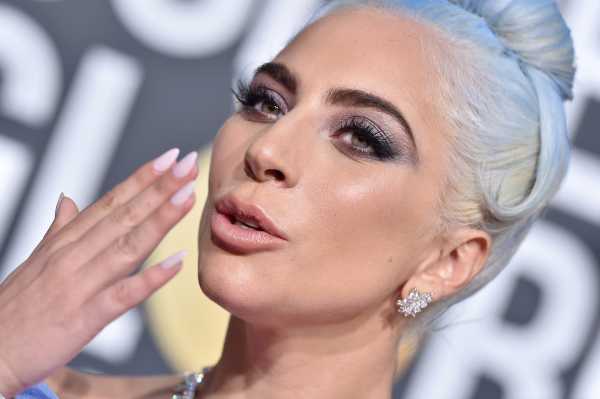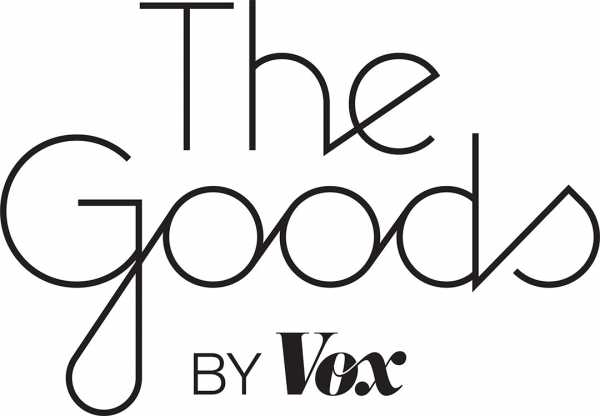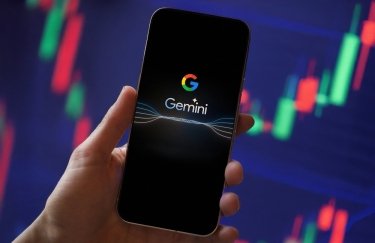

Lady Gaga famously wore no makeup to her audition for A Star Is Born, but you can safely guess that she’ll be wearing plenty of it to the Oscars. Gaga is nominated for Best Actress in a Leading Role for her turn in the film, and she and her longtime makeup artist Sarah Tanno love a statement look. Another safe bet will be that the makeup will be come from Marc Jacobs Beauty — or at least the products that you hear about.
Tanno is a “Marc Jacobs Beauty Global Artistry Ambassador.” This means that the brand pays her to use and publicize its products. (There are several other high profile makeup artists who hold this title as well, including Adele’s makeup artist, Michael Ashton.) She gives interviews with detailed product breakdowns and tags the brand frequently on her Instagram, where she has 195,000 followers. She’s done this consistently on her feed all during awards season.
Ultimately, the red carpet is an ad — for the studios, for the celebrities, for the “who are you wearing” gowns that, sorry, you’ll probably never wear, and, yep, for the foundation and eyeshadow you might actually splurge on. As Connie Wang pointed out at Refinery29, the red carpet is “a money-making marketing event that benefits the fashion industry and the celebrities that profit from the whole spectacle.”
In Hollywood, it’s an open secret that celebrities get paid a lot of money to wear certain fashion or jewelry brands and that stylists get paid to put them on their clients. Ditto beauty, even though you’ll never hear Giuliana Rancic ask, “What eyeshadow is that?” (We came close to this reality for nail polish with the short-lived, much-maligned “Mani Cam.”)
But thanks to “get the look” beauty breakdowns from People, InStyle, and Us Magazine, and behind-the-scenes Instagram stories from the artists documenting every brushstroke, brands that sell beauty products are getting plenty of attention.
These lucrative deals raise difficult-to-parse questions about sponsored content and the need for Federal Trade Commission
How lipstick ends up on a Best Actress nominee
Celebrities have long been the benefactors of lucrative beauty contracts, but now more and more makeup and hair care companies are negotiating arrangements with the so-called “glam squads” behind the famous faces. Artists have had brand deals in the past, like makeup artist and author of the classic Making Faces, Kevyn Aucoin, who worked with Shiseido in the 1990s.
But they are becoming more common and visible than ever thanks to Instagram and the rise of influencer culture. A brand ambassadorship is an opportunity for the pros behind the scenes to make extra income and earn some publicity for their artistry. And they’re not the only ones benefiting.
Very few people involved in the deals are willing to talk frankly about this practice. I reached out to several agencies that represent makeup artists, celebrity branding agencies, brands (including Marc Jacobs Beauty), and publicists. Many either didn’t respond or declined to be interviewed. A few who did wanted to remain anonymous. One boutique agency that brokers celebrity brand deals wrote to me, “This isn’t anything we’d like to discuss.”
“This isn’t anything we’d like to discuss”
After awards shows, you’ve probably seen “get the look” makeup and hair breakdowns on lifestyle sites and tabloids like US Weekly. The featured products get there in a variety of ways.
Sometimes a product gets attention because a celebrity uses it and genuinely loves it. At the 2014 Oscars ceremony, during a bit in which host Ellen Degeneres went around collecting tips for a pizza delivery man, Lupita Nyong’o pulled a Clarins lip balm out of her purse and dropped it in Ellen’s hat. The moment went viral and, as per a giddy press release sent out by the brand, the lip balm nearly sold out across the country overnight. A month later, Clarins competitor Lancôme signed Nyong’o to a lucrative multi-year beauty contract, which she still has.
Which brings us to the second kind of beauty brand endorsement, likely most familiar to consumers: the celebrity brand deal. When her makeup artist Nick Barose gives interviews about Nyong’o’s looks, he uses all Lancôme products because she’s their brand ambassador. It’s similar to when a celebrity signs a long-term deal with a fashion brand, like Jennifer Lawrence and Dior. You won’t see her on a red carpet in a non-Dior outfit or without a face full of Dior makeup.
Then it gets more confusing. Take Gal Gadot and her makeup artist Sabrina Bedrani. In an Allure story about 2018’s Oscars beauty looks, it notes that Bedrani used all Revlon products on Gadot. Not a surprise, because Gadot was named a Revlon beauty ambassador just a few months prior to the Oscars. But Bedrani is herself a Dior makeup ambassador; her client’s beauty deal (of course) preempts her own.
The up-and-coming generation of makeup artists and hair stylists have amassed healthy social media followings in their own right, and brands know that they can be a good avenue to showcase product on celebrities without paying the celebs directly. Makeup artists and hair stylists are less expensive than stars, who can command seven figures or more for brand ambassadorships.
“[Brands are] actually treating stylists and artists like influencers. We’re looking at the influencer behind the influencer being just as important nowadays. It’s not just about on-screen talent anymore,” says Stacy Jones, the CEO of Hollywood Branded, an entertainment marketing agency. And celebrities often know their glam squads are getting paid by brands. “Stylists and makeup artists often have a very close relationship with their [clients]. Most of the time it’s the celebrity going along and supporting that stylist.”
“It’s not just about on-screen talent anymore”
As a result, more artist brand ambassador deals are being made, and brands are actively promoting the artists. According to a 2017 Marc Jacobs Beauty press release announcing the new artistry ambassadorships with Tanno and the others on the brand’s roster, “These artists will be leveraged across every platform where they will share their skill set with clients and media alike.”
So who gets paid and how much?
How the deals actually happen and how much money changes hands is pretty opaque. How much an artist gets paid depends on a variety of factors, according to Jones, including the size of the artist, the length of the deal, the star or stars involved, and agreements around the number and content of social media posts and press interviews. Plus, factor in the relative “importance” of whatever red carpet they’re working.
The partnerships can be longer term, like Tanno’s, or one-time deals for a specific show. “[The rate] could start at $7,500 and go up to hundreds of thousands of dollars for these partnerships,” says Jones.
One-time deals for red carpet events have been a time-honored tradition, occurring regularly ever since magazines and tabloids have covered event fashion. But they’ve increased in the past 10 years as the immediacy of digital media has allowed brands to communicate with readers and consumers quickly, often in real time.
Jones calls this situation more “opportunistic” than strategic, noting that brands now want to develop stronger and longer-term relationships with artists, especially if they have an attractive roster of popular celebs. But the one-offs can be a lucrative side hustle. She said an artist working at a “good show” with multiple celebrities could pull in $25,000 from a brand, and that doesn’t count the fee the artist charges the celebrities for services. The lower rate would likely be for a smaller-scale red carpet event — think the People’s Choice Awards — which is consistent with what one industry source familiar with the process of brands “sponsoring a look” said.
“We once paid a makeup artist $6,000. They then would give the look breakdown and do any corresponding interviews for it,” the industry source said. The “look” includes only products from the brand paying the artist.
According to another industry source familiar with one-time deals, agencies that represent makeup artists and hair stylists start “shopping [them] around a few weeks before the awards.”
In one email reviewed by Vox, an agency representative wrote to a brand representative soliciting sponsorship for an artist who would be working with an A-list actress and presenter for an upcoming awards ceremony. “Would love to work with you for the ‘get the look,’” the email read. This means that the artist would use all products from the sponsoring brand and be prepared to discuss them with media.
During the event or the next morning, beauty editors will find dozens of emails from brands in their inboxes explaining exactly which products were used on which celebrities and offering interviews with artists and hair stylists. (I’ve received these emails in my past role as a digital beauty editor.) Oftentimes brand emails will already include quotes directly from artists.
These become the perennially popular “get the look” stories. Readers genuinely want to know what celebs are wearing, meaning that sites get traffic and possibly affiliate revenue. Brands get awareness, sales, and the kind of glow that can only come from a celebrity. Celebrities get their faces splashed across the internet.
“It’s to the benefit of the celebrity to get press, talking about their flawless makeup look. It all goes into the entire package and story and PR angle of a celebrity,” says Jones.
The celebrities who end up with these products on their faces sometimes have input into these deals but may not be paid. “The [artist’s] agency usually won’t approach brands without them being okayed by the celebrity’s PR, in my experience, but it’s really between the brands and agency,” said one of the industry sources. This is consistent with a 2017 Business of Fashion report, which noted that often “the stylist is getting paid and the celebrity isn’t, especially with beauty deals.”
Brands want the consumer to think that the celebrity loves a product because it was on their face. And it works. At the 2018 Grammy awards, Glossier teased a new product release that Beyonce’s makeup artist Sir John used on her at the Grammys. In an Instagram post after the show, the brand wrote, “Beyoncé wears ___ in ___ (coming soon).”
Sir John said in a Glossier press release, “I was lucky enough to be one of the first people to try a new and exciting product from Glossier. Stay tuned to hear more but I LOVED using it on Bey all weekend.” Headlines like, “Beyoncé Loves This Millennial Favorite Makeup Brand” appeared online.
A few weeks later at the Oscars, the product was revealed to be a new type of eyeshadow. Several actresses — all with different makeup artists — wore the eyeshadow to the Academy Awards. It wasn’t a coincidence that the makeup artists all stumbled on this wonderful shadow and decided to use it for the Oscars red carpet.
As I reported at Racked at the time, Glossier savvily used the event to debut its new product; it was covered everywhere. And it’s not obvious (Glossier did not answer questions about the situation at the time) who — the artists, Beyoncé, the actresses, everyone — was paid.
The Federal Trade Commission (FTC) is the government agency responsible for monitoring advertising. Its endorsement guidelines attempt to clarify how this should be done on social media when posting about products. In the fall of 2017 it sent warning letters to celebrities and influencers about properly disclosing “material connections” to brands.
A material connection means that a brand is paying or giving free product to an artist or celebrity. It implies a business relationship. The second important part is whether viewers, followers, customers, or readers would expect there to be that connection, according to Amy Mudge, an attorney specializing in regulatory law at Washington, DC, firm BakerHostetler. If there’s a material connection that consumers wouldn’t expect to exist, it should be clearly disclosed. But does paid red carpet product use and the press releases I get count as advertising?
“There is not a bright line answer here,” says Mudge. “If there is no
Mudge acknowledges that
While consumers are more savvy, brands and artists can’t assume that most award show viewers are so naturally cynical — or understand so much about the hush-hush world of red carpet monetization, or keep up with the many brand partnerships being announced — that
But Mudge says it’s not enough to put “X brand ambassador” only in an Instagram profile. “Posts are viral. People can come and look at a single post and might not look at an influencer’s entire body of work,” she explains.
As Julie Zerbo wrote at The Fashion Law back in 2017, while discussing the
The same goes for beauty. Mudge says, “People may understand that [someone] is a commercial makeup artist and this is her commercial feed and she is being paid. But ultimately, if the FTC came knocking, it’s going to be the brand’s and the influencer’s responsibility to demonstrate to the FTC, ‘Don’t worry about it, no one’s confused here, everyone understands that we’re all working together.’”
Speaking of cynicism, this all assumes that the products that are being hyped are the ones that were actually used. One of the industry sources said, “They never actually use your product! Well, hopefully [they do], but usually a makeup artist uses what they were planning to anyway.” This lines up with behavior I sometimes witnessed backstage at fashion shows. A makeup brand would sponsor the show, but the artists would be using some products that weren’t from that brand.
So, this awards season, if you see and admire your favorite actress wearing a beautiful lipstick, be wary. Brands pay a lot to get you to “get the look.”
Want more stories from The Goods by Vox? Sign up for our newsletter here.
Sourse: vox.com






